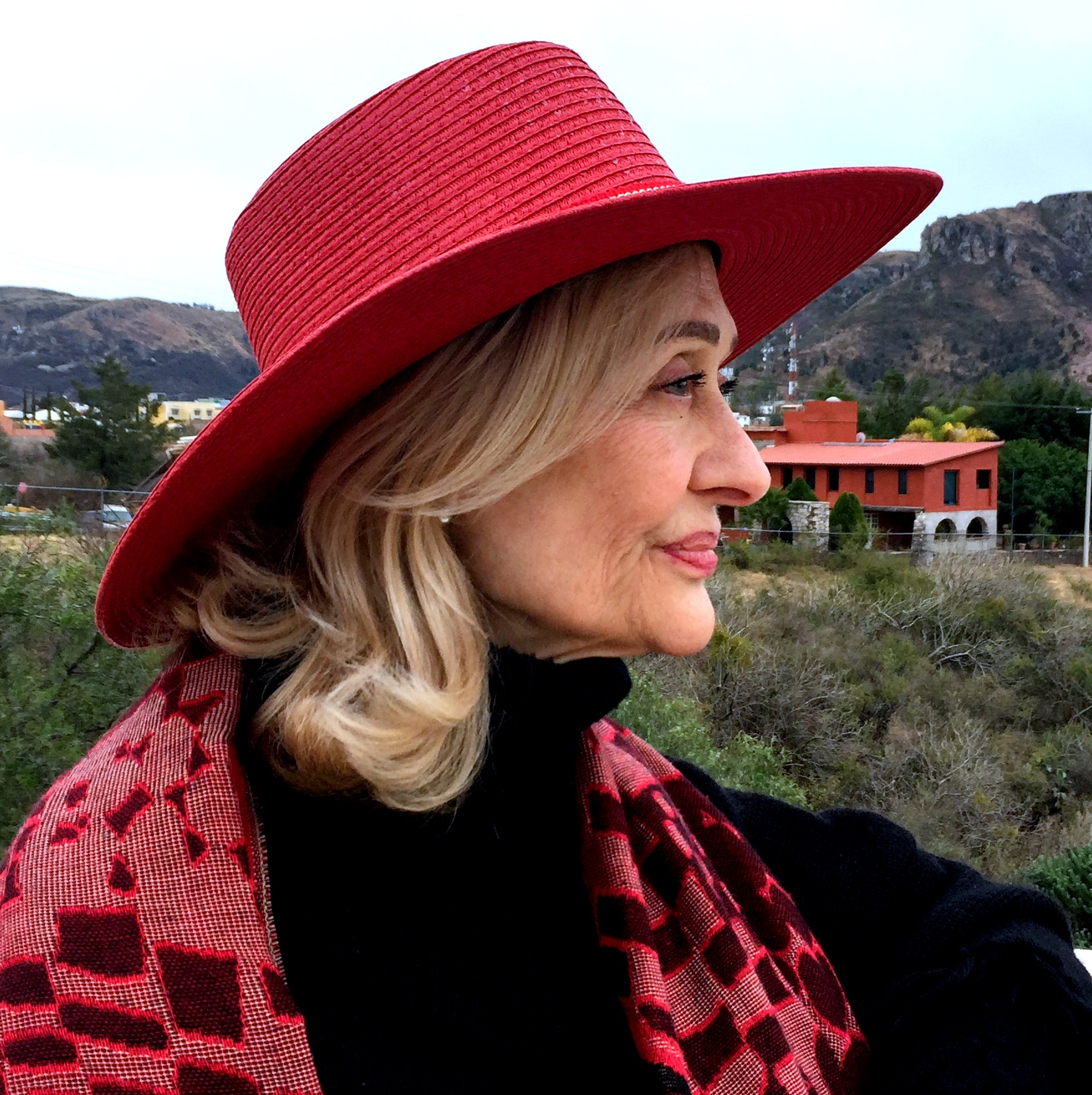Both parents had lived non-stop, very active lives – Mother in teaching and Dad in farm management. In retirement, they traveled internationally and domestically, and wintered in Sarasota where they had many good friends and family… Supporting their need and desire to be out and about at a time they were still able to “be on the go” was important to their well-being following their respective diagnoses. Long-term confinement would not have been – and later proved to not be – a good fit for either one of these independent spirits!
Today, research offers scientific evidence to support the work of architects, designers, and engineers in creating green space to positively impact our health. And, we are now finally learning that it needs to be far more inclusive for people living with dementia. This post uses the term, “green space,” to describe being in and surrounded by nature.
This is a no-brainer: walk-a-mile in their shoes.
 Dad would have been pushing the exits to get out-of-doors. And our independent-minded Miss Ethel, a college athlete with her own out-of-door spirit – someone who welcomed a challenge – would not have easily taken to confinement.
Dad would have been pushing the exits to get out-of-doors. And our independent-minded Miss Ethel, a college athlete with her own out-of-door spirit – someone who welcomed a challenge – would not have easily taken to confinement.
This was confirmed in separate experiences with each parent being found in restraints upon my arrival in separate institutions. The first was in 2001. After one over-night stay in a regional medical center, Mother and I found Dad tied into his chair, struggling to release himself as we arrived the following morning.
In 2010, during 19 days in a nursing home, Mother stopped eating. On several occasions upon my arrival, I had found her bound up in a wrapped blanket like a papoose – with no ability to move arms and legs. As a musician, she had still moved her arms in a lovely way as though conducting a choir. But now? The heavy blanket was being used as a restraint with no apparent regard for the elevated room temperature on these July days in the Midwest.
From Dad’s 2001 experience to Mother’s 2010 experience, it appeared that the use of restraints for people living with dementia had not changed.
Context matters. It began in 1998 – the year Google was founded.
Our intergenerational experience at the ranch began in late 1998, the year in which Google was founded. Yahoo had been established four years earlier and appeared to be the leading search engine. Still in infancy, neither one was of value when it came to quickly learning – or doing any indepth research – about “dementia best practices.”
Application to “dementia best practices”
 The work of Carl Rogers on “person-centered care” had been of great interest to me as a graduate student in the 70’s. Tom Kitwood’s book, Dementia Reconsidered: The Person Comes First, was published in 1997 – and pioneered a “person-centered care” movement leading to better understanding of dementia. My discovery of this book was, perhaps, in the mid-2000’s.
The work of Carl Rogers on “person-centered care” had been of great interest to me as a graduate student in the 70’s. Tom Kitwood’s book, Dementia Reconsidered: The Person Comes First, was published in 1997 – and pioneered a “person-centered care” movement leading to better understanding of dementia. My discovery of this book was, perhaps, in the mid-2000’s.
Thus, from the beginning, our ranch experience was based on intuition, common sense, and continuing to do those things which we had always enjoyed. Yes, there may have been a diagnosis, but how could Mother’s condition spiral downward overnight – with a prognosis of “happening over time”?
She still had needs – to be respected, to be included in the discussion about her future, to be heard – and to be treated as a person, now living with a devastating diagnosis.
The on-off switch for compassion seemed to be on “off.” Kate Swaffer in her 2016 book What the Hell Happened to My Brain? (2016) refers to this period as Prescribed Disengagement®. Her article, “Reinvesting in life is the best prescription” was published in the Australian Journal of Dementia Care in 2014.
Personal retrospective
The day of diagnosis was totally heart-wrenching. I was informed at my desk in Chicago. Questions and observations from that day included…
- “How would we know Mother’s potential and ability to function if she were to have support at home?” “Why would we immediately give up by entering a nursing home?” It was my father who stated at a family meeting, held at a later date, that Mother “could have another ten good years.”
- I personally knew nothing – or very little – about Alzheimer’s, but I could immediately see that both parents would be needing support going forward. Why would we have abandoned them to available “treatments”?
During the years which followed Mother’s diagnosis of Alzheimer’s and Dad’s diagnosis of Vascular Dementia…
- … they were both cognizant of discussions taking place around them and in their presence. A state of awareness continued until their final hours – years later!
- … they both retained a strong “sense of place.” They knew where they were and frequently expressed gratitude!
- … they engaged in activities meaningful for this developmental stage!
Lake area with walking path through the woods
 Upon my arrival back in my hometown, it was a matter of days until we were out on brisk walks through the crisp snow on the walking path – in the woods close to the lake behind my parents’ home. These energizing walks followed Mother’s quick recovery from a year-long bout with nausea, caused by the Alzheimer’s med she had been prescribed. Consulting with her physician, the medication was immediately stopped on a trial basis, and within 36 hours her appetite returned.
Upon my arrival back in my hometown, it was a matter of days until we were out on brisk walks through the crisp snow on the walking path – in the woods close to the lake behind my parents’ home. These energizing walks followed Mother’s quick recovery from a year-long bout with nausea, caused by the Alzheimer’s med she had been prescribed. Consulting with her physician, the medication was immediately stopped on a trial basis, and within 36 hours her appetite returned.
We celebrated the return of Mother’s appetite with evening trips to the Dairy Queen a number of years before taking a major step regarding our nutrition. It was following Dad’s death that we “graduated” to eliminating added sugar.
Her physical strength, interest and desire to be out – walking or serving as “navigator” on a drive – continued for a number of years. Remarkable to me was her ability to respond to the statement, “I wonder what direction we are going.” She always offered the correct answer.
At the ranch – surrounded by green space
A care partner or family friends would frequently take my parents on drives through the countryside in the late morning hours. This would give them the opportunity to observe the growth of the crops in the surrounding fields.
As in earlier years when Mother and Dad would hop into the jeep on a summer evening to drive through the fields, checking the progress of crops in the always-changing landscape was an important part of being close to nature.

Occasional picnics at the lake were refreshing for all of us at the end of the day. Just the basics – an easy-to-pack supper and a tablecloth to lay out on the picnic table close to the water’s edge!
And on one notable day in which Dad pressed to return to his home area, I found myself driving them to his birthplace in a country house, then owned by a retired university professor and his wife. They were most hospitable and invited us in – where we were able to see the room in which Dad was born!
Being there was a significant and moving experience for all of us. Yes – we definitely arrived at the correct destination that day. We had found Dad’s birthplace – and he had been able to “go home.” We revelled in our victory!
After the weekday jaunts and outings: always ready to “go home” – back to the ranch
Then back to our modest “ranch” – surrounded by the familiar woods and farmland which Dad and Mother had farmed for close to 30 years. A front porch and a small side patio with a little more privacy – these meant that my parents were surrounded by the woods, foliage, flower gardens, porch plants, and sunny skies. In front of them were two well-visited bird feeders. As a former member of her college Audubon Society, Mother loved to watch “her” birds.
 And, following Dad’s death, while sitting with her in the warm sunshine on the side patio following a Sunday service, she pointed through the dense woods to the very busy highway. It was now heavily-trafficked and officially named tthe “Reagan Historical Trail.” She said without hesitation, “That’s where I used to ride my horse to school.”
And, following Dad’s death, while sitting with her in the warm sunshine on the side patio following a Sunday service, she pointed through the dense woods to the very busy highway. It was now heavily-trafficked and officially named tthe “Reagan Historical Trail.” She said without hesitation, “That’s where I used to ride my horse to school.”
She was spot-on – in spite of the busy highway having NO resemblance on that day to the road as it would have appeared when she was a high school student.
Both parents retained that same “sense of place” until their final hours. They knew where they were, and both expressed gratitude throughout the day – and as the lights were turned out at night.
Accommodating a need to be close to nature was an intentional part of our desire to live our best lives. This is what we had set out to do. But how could this “green space” have ever been more perfect for the “ranchers”?!
A Canadian Philosopher and Theologian once said: “I believe that those we most often exclude from the normal life of society … have profound lessons to teach us. When we do include them, they add richly to our lives and add immensely to our world.”
A contrasting scenario
Had it come to a vote among siblings, it was clear – Mother and Dad would have both been admitted to long-term care at the point of diagnosis. At the time, AARP statistics reported that the average stay in a nursing home was 2.4 years. Based upon our experiences with a brief institutional admission for both parents almost a full decade apart, neither one would have survived even close to 2.4 years!
Both would have found a way out – an exit – to a “greener space.” Their desire to be in nature and not in “confinement” was in their DNA.
Kate Swaffer and academic group write about “confinement”
 Kate Swaffer (KateSwaffer.com) is a member of an Australian academic group which has co-authored the following two papers. The first was published in The Health and Human Rights Journal (June 2020). The second was published in The Australian Journal of Human Rights (June 2020).
Kate Swaffer (KateSwaffer.com) is a member of an Australian academic group which has co-authored the following two papers. The first was published in The Health and Human Rights Journal (June 2020). The second was published in The Australian Journal of Human Rights (June 2020).
These articles – written in language comprehensible to lay people – are being shared here on the subject of “Human Rights and Confinement.”
- Human Rights and the Confinement of People Living With Dementia in Care Homes
- Ending Confinement and Segregation Barriers to Realising Human Rights in the Everyday Lives of People Living With Dementia in Residential Aged Care
“Dementia Awareness Month 2020” – People living with dementia are still an “excluded” group
Noteworthy in my experience is that when we boldly share, write, and comment on the subject of Human Rights on social media platforms, one group is universally excluded. It’s a large segment of our population – people living with dementia. The group remains invisible – and excluded – even in our social media “activism.” Our state of denial continues.
No one should be left behind!
Kate provides an opportunity to become informed on the subject of Prescribed Disengagement®. Her blog is filled with posts on the subject, “Reinvesting in life is the best prescription.”
She has been there already! She has begun the leadership work already! As a leader in the dementia community, she has made a major contribution to changing the culture!
And now she has generously handed over these two impressive studies on Human Rights and Confinement.
It is time to – seriously – take a serious look.
Author: Susan Troyer



Leave A Comment